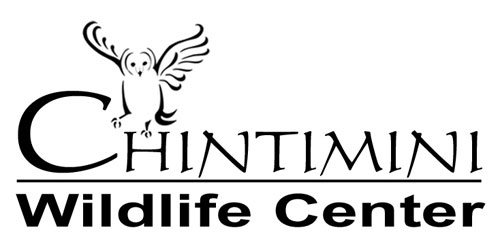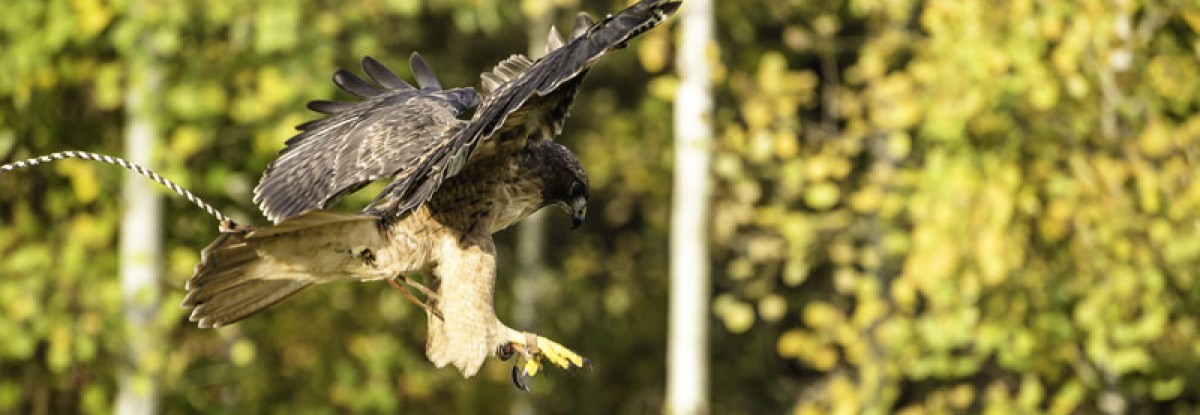The majority of our blogs are written from the perspective of patient caregiver or community educator. We describe patients and their condition, or explain various ways we should (or shouldn’t) interact with wildlife – particularly as it relates to urban settings. Sarah, a Thursday PM volunteer, takes a twist to our standard writings and contemplates her relationship to our wild patients as she writes about it from how she might imagine their point of view.
“The other morning, I woke with a sniffle and a sneeze. At first I blamed it on inhaling too much incense cedar pollen when arranging festive greenery for the holidays. But half a day and tons of sneezes later, I knew I was just sick, suffering from what turned out to be a full-blown sinus infection.
Of course, being sick meant missing my last Chintimini volunteer shift of 2017. As I lay in bed feeling sorry for myself for not getting to clean bird poop off walls or behead dead mice for a raptor’s dinner, I suddenly realized that I could look at being sick as an opportunity to relate to the winged and non-winged convalescents at Chintimini Wildlife Center (CWC) in an entirely a new way. For the record: I do not eat mice and I generally manage to not poop on walls. Those aren’t the areas of relating I’m getting at. Rather, it’s that I could not reliably gauge my caregiver’s intentions toward me as I recovered.

It’s true my caregiver is a loving, domesticated (at times unscrupulous) beast, and there does exist greater understanding between domesticated animals and humans relative to that between wild animals and humans. Even so, how can I really know whether my cat was sleeping on my feet to keep them cozy OR if it she was merely setting an ‘alarm’ to ensure she wouldn’t miss a potential feeding opportunity if I got up to rewarm my tea? Being on the other side of this inter-species interaction made me wonder: If I can’t discern my beloved cat’s intentions, how can I presume to understand the thoughts of injured wildlife anymore than they can understand mine?
One of CWC’s primary goals is to provide “a place where impacted wildlife can receive quality care while being treated with the respect and admiration that is their due.” BOTH domesticated and wild animals deserve respect; however, the ways in which we express those values look very different in practice.

You won’t find volunteers with bigger hearts than those of CWC. And it is wonderful to see how rewarding it is for community members who successfully deliver struggling wildlife to safety. Empathy is such a rush!! It just makes you want to help every single patient in every way possible!! This is such a good thing…to a point.
Such states of unbridled empathy also come with the risk of forgetting that our patients are, in fact, wild creatures, not pets or babies to be held and petted and talked to.
Handling wildlife in this manner can potentially cause even the very best of intentions to backfire. But more than simply acknowledging our inability to read animals’ minds, we need also to realize, internally, that empathy is not a license to thrust human conceptions of ‘soothing care’ onto creatures completely unaccustomed to them.
This fundamental respect for wildlife is not limited to volunteers at wildlife care centers, nor is it limited only to encounters with sick, injured, or lost wildlife.
Rather, we all share the responsibility of treating wildlife with the utmost respect and awe. They are not just around to pose with you for selfies! If you find yourself struggling in the quest to tame your empathy, the following ‘approximations’ may be an illuminating place to start:
— — — — — — –
Can You Relate?
— — — — — — –
To understand why injured, lost, or sick wildlife don’t seem ‘to like’ you:
Imagine waking to a strange environment with no clue as to how you got there. Notice the creatures hovering above you. Didn’t you just see these guys in a re-run of The X-Files? Why are they just staring at you? Oh no, are they poking you?! Personally, if I woke up to find myself kidnapped by aliens in a real-life X-Files scenario I might find it a little disconcerting.
To understand why wildlife patients don’t understand that we’re trying to
help them:
Remember how scary it was to get vaccinations as a child, not understanding that it was actually in your best interest? There’s a reason the nurse had to lure you into the exam room with lollipops.
To understand why maintaining healthy fear of humans is desirable:
Do you remember when you learned not to touch a hot stovetop? Animals released to the wild must continue to avoid humans in the future, possibly saving their or their offsprings’ lives.”
Sarah, Thursday PM Volunteer


Ok, I love this. Sarah, you’re spot on. I admire your intelligence and the way you reflect your thoughts effortlessly through your writing. I just stumbled upon this while googling “wildlife rehabilitation blogs”, as it is one of my biggest passions and I always feel that I could learn more from the perspective of others. Most blogs have been written in a way that you can predict without a doubt that a biologist wrote the article. Nothing at all against biologists – I myself went to school for journalism before deciding to redirect my life towards the dreams I had had since watching Fly Away Home as a little girl… and found myself studying wildlife biology. (Before I was lured off by a man who raised a grizzly bear and made television for Nat geo, and I opted to travel the world as opposed to sitting in a classroom… but that isn’t the point I am trying to make here). Somehow, you nailed it in this blog and I wanted to give you props for that! 🙂
LikeLike
Thanks for your feedback! It’s fun to have our volunteers write as guest bloggers so we are able to have a wide range of viewpoints and experiences. We are happy to hear you enjoyed this blog post!
LikeLike